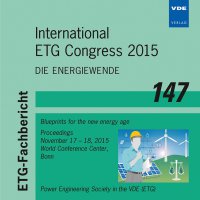Predicting the Balance of European Control Areas
Konferenz: International ETG Congress 2015 - Die Energiewende - Blueprints for the new energy age
17.11.2015 - 18.11.2015 in Bonn, Germany
Tagungsband: International ETG Congress 2015
Seiten: 7Sprache: EnglischTyp: PDF
Persönliche VDE-Mitglieder erhalten auf diesen Artikel 10% Rabatt
Autoren:
Scheufeld, Oliver (Forschungsgemeinschaft für elektrische Anlagen und Stromwirtschaft (FGH) e.V., Aachen, Germany)
Schoeneberger, Mathias; Krahl, Simon; Moser, Albert (FGH e.V., Aachen, Germany)
Gilsdorf, Peter (Amprion GmbH, Brauweiler, Germany)
Inhalt:
Due to major changes in the interconnected European transmission system for electrical energy, the complexity of the operational planning processes executed by transmission system operators (TSOs) increased significantly in recent years. This paper introduces an approach to forecast the balance of control areas in Europe on a day-ahead time horizon considering e.g. implicitly intraday trading activities and the volatility of electrical power in-feeds from renewable energy sources (RES). The day-ahead congestion forecast (DACF), which is currently executed by the members of the “European Network of Transmission System Operators for Electricity” (entso-e), is based on coordinated power exchanges across control areas from the day-ahead stage and does not take intraday effects into account. Therefore, the differences between the prediction of control areas’ balances using the day-ahead exchange forecasts (DAEF) based on scheduled trades and the actual power flows (APF) provided by entso-e after-the-fact are significant. The forecast error can be reduced by applying the method presented in this paper. The method is based on an artificial intelligence technique. The results of the approach presented here show that the model is capable of predicting the balance of control areas with an improved accuracy compared to the prediction resulting from the DAEF even with a limited set of input data. Furthermore, the accuracy of the prediction can be improved potentially by extending the input data set. All data used as an input for the model is publicly available. A sensitivity analysis of the impact of additional input data as well as control area specific sets of input parameters will be the subject of future research work.


